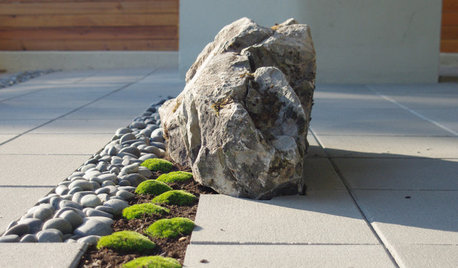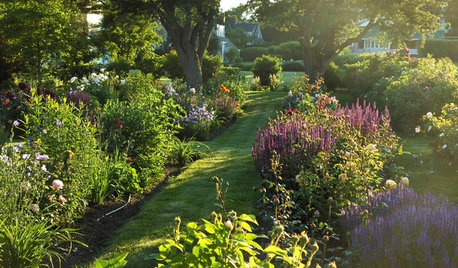Comparison
bigpinks
11 years ago
Related Stories

GARDENING AND LANDSCAPINGChoosing a Deck: Plastic or Wood?
Get the pros and cons of wood, plastic, composite and more decking materials, plus a basic price comparison
Full Story
FURNITURESmart Shopper: How to Buy a Mattress
Confusing options, hair-raising prices, haggling ... Our guide can keep you from losing sleep over mattress shopping
Full Story
KITCHEN COUNTERTOPS7 Low-Maintenance Countertops for Your Dream Kitchen
Fingerprints, stains, resealing requirements ... who needs ’em? These countertop materials look great with little effort
Full Story
LANDSCAPE DESIGNDare to Mix Things Up in the Landscape
Courageously contrast plantings, materials and structures in your garden to create unexpected beauty and intrigue
Full Story
KITCHEN DESIGN9 Ways to Design a Kitchen Desk With Style
Great Details, Color and Light for Your Kitchen Command Center
Full Story
GARDENING GUIDESGive Your Garden an Arresting Point of View
Create a strategic outdoor focal point for an inviting scene and calming sense of balance
Full Story
EDIBLE GARDENSHow to Grow Your Own Luscious Cherries
Nope, they’re not the easiest fruit to grow. But with spectacular blossoms and pies as possibilities, cherries are sure worth a try
Full Story
HOW TO PHOTOGRAPH YOUR HOUSETake Better Photos of Your House in a Snap: Part 2
Think like a professional photographer and learn to capture stunning images of your home
Full Story
LANDSCAPE DESIGNGarden Design Essentials: Proportion and Scale
Tiny features in an expansive landscape miss the mark. Here's how to make sure your garden elements relate properly
Full Story
REMODELING GUIDESYour Floor: Two Tiles to Love
Cement and quarry tiles are easy, lasting and unexpected
Full StorySponsored
More Discussions






digdirt2
bigpinksOriginal Author
Related Professionals
Brentwood Landscape Architects & Landscape Designers · Fort Myers Landscape Contractors · Lemoore Landscape Contractors · Broadview Heights General Contractors · Clarksville General Contractors · Mansfield General Contractors · North Tustin General Contractors · Bainbridge Island Decks, Patios & Outdoor Enclosures · Franconia Decks, Patios & Outdoor Enclosures · Fort Pierce Decks, Patios & Outdoor Enclosures · Hayward Decks, Patios & Outdoor Enclosures · Kalamazoo Decks, Patios & Outdoor Enclosures · Medford Decks, Patios & Outdoor Enclosures · Montgomery County Decks, Patios & Outdoor Enclosures · Spokane Decks, Patios & Outdoor EnclosuresDjole
digdirt2
Djole
digdirt2